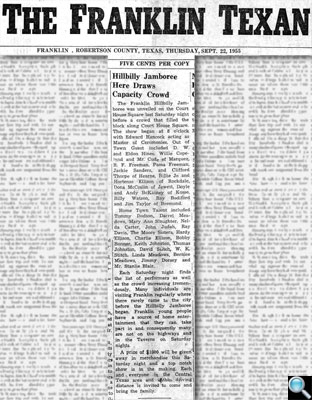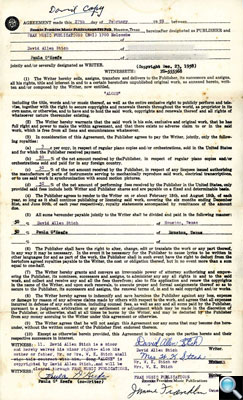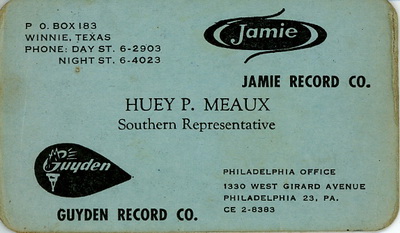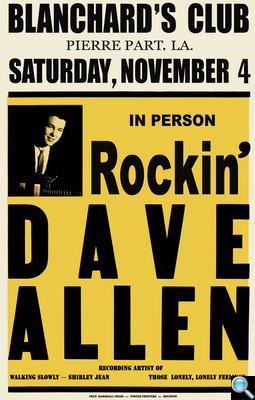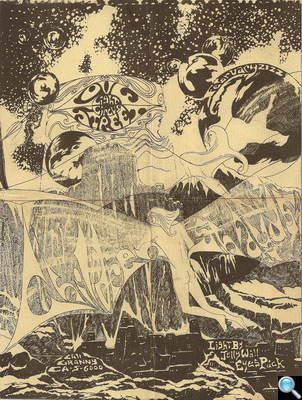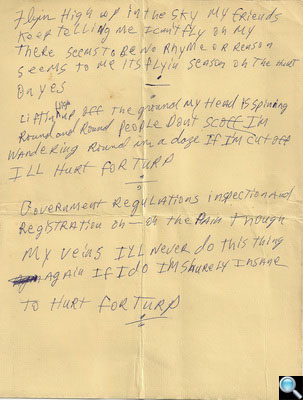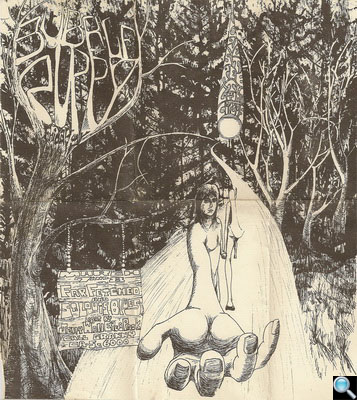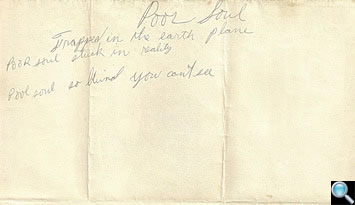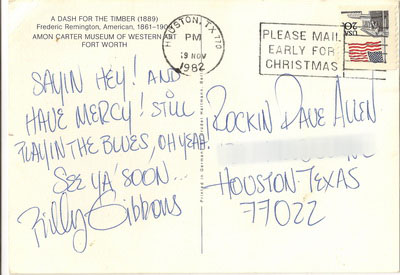Memorabilia
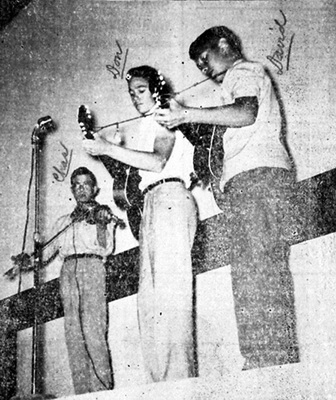 |
Newspaper photo from The Franklin Texan of the Franklin Hep-Cats at the Hillbilly Jamboree, published January 13, 1955. Taken at the Franklin Theater on New Year’s Eve, 1954. From left to right, Charles Ellison on fiddle, Don Wood on guitar and Dave, age 13, with his Silvertone archtop guitar. The “Hillbilly Jamboree News” was a regular feature in the Texan that often mentioned Dave. In a chatty tone common to small town newspapers, Dave is said to have “made the gals’ hearts flip-flop,” “knocked sparks with his guitar” and “nearly beat the strings off it.” One column mentioned that Dave “has a new guitar (a 1956 Fender Stratocaster) ordered,” and in a later edition called him “the flash of ’56, doing some fast and fancy picking on that new guitar.” |
| Newspaper clipping from The Franklin Texan reporting on the Hillbilly Jamboree, published September 22, 1955. A more formal article lauding the Jamboree that mentions Dave and his father as two of the original organizers. (The Franklin event later evolved into the ongoing New Baden Jamboree.) Noting the Jamboree’s increasing popularity, the article calls it an occasion where “Franklin young people have a source of entertainment…and consequently are not on the highways and in the Taverns (sic) on Saturday nights.” In a related but somewhat contradictory article in the same edition, the Franklin Chamber of Commerce expressed concern to Dave’s father that “the Jamboree was interfering with the expected proceeds of the new Franklin Theater movie house” (with a wealthy Robertson County businessman as the main investor). Because the Jamboree had been moved outdoors to accommodate a growing audience, city officials asked Mr. Stich to hold the Jamboree in the theater on a night other than Saturday. Mr. Stich replied to the effect that Saturday was the only night most musicians were available and the theater was too small anyway. In the final paragraph, the article dramatically compares the dilemma to that of King Solomon and the baby. |
Registration of a claim to copyright in a musical composition by David Allen Stich (music) and Paula O’Keefe (words) for “Alone,” dated December 23, 1958. Although written and recorded in 1958, “Alone” did not appear as a Jin single until 1960. |
Contractual assignment, typically draconian for its era, for publishing rights of “Alone” to Jimmie Franklin of Fran Music Publications, dated February 27, 1959. Dave’s mother had to co-sign because Dave was still a minor. |
Letter from Floyd Soileau of Jin Recording Company formally accepting the demo tapes for “My Broken Heart” and “What’s Left for a Fool,” and offering to reimburse Dave $45.00 in recording expenses, dated February 1, 1960. |
Contractual assignment attached to above cover letter for publishing rights of “My Broken Heart” and “What’s Left for a Fool” to Floyd Soileau of Jin Records and its subsidiary Flat Town Music for the nominal sum of $1.00, dated February 1, 1960. |
| Hit Parader record chart from radio station WAIL, 1460 AM, week of April 24, 1960. Dave’s hit “My Broken Heart” charted at number nine, after “Stuck on You” by Elvis Presley and before “Wonderful World” by Sam Cooke. (“Cherry Pie” by Skip and Flip was listed as the number one song that week. “Flip,” a.k.a. Gary S. Paxton, is probably best known for later producing the novelty hit “Monster Mash” by Bobby “Boris” Pickett.) WAIL-AM’s location is lost to online history, but it is not be confused with WAIL-FM currently broadcasting from Key West, Florida. |
| Business card of Huey P. Meaux, circa 1964. Among many other things, Meaux was Dave’s producer for the Eric singles. |
|
| Rare poster from Blanchard’s Club in Pierre Part, Louisiana, circa 1964. Dave was a frequent and highly sought-after headliner in nightclubs during this period. |
|
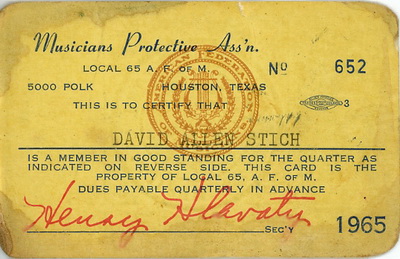 |
Dave’s union card, Musician’s Protective Association, Local 65, valid from February 11 to September 29, 1965. Dave paid dues amounting to $9.00 per quarter. |
| Jones Recording Studio invoice for a mixing session, presumably for one of Dave’s demo tapes, dated April 4, 1967. Itemized and signed by country singer and future owner of the world-famous Gilley’s Club, Mickey Gilley, then an associate of Jones Recording. |
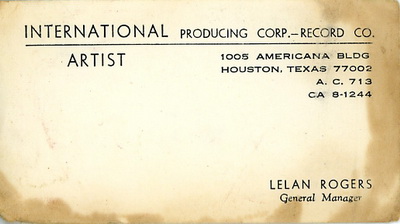 |
Business card of Lelan Rogers, a principal participant in International Artists Records and brother of country singer Kenny Rogers, circa 1967. |
 |
Handwritten lyrics to “Lord Have Mercy” from the Color Blind sessions, 1968. Written on the back of a concert flyer that Dave found in the International Artists offices. |
| Handwritten lyrics to “Terp” from the Color Blind sessions, 1968. Written on the back of a concert flyer that Dave found in the International Artists offices. |
| Concert flyer on the front of the above document. A promotional handbill for the Love Street Light Circus that publicized International Artists act, (The) Bubble Puppy, who appeared on March 7 and 8, 1968. Bubble Puppy’s hit single, “Hot Smoke & Sassafras,” reached number thirteen on the Billboard Hot 100 the following year. |
 |
Fragment of handwritten lyrics to “How Can You Be So Cold” from the Color Blind sessions, 1968. |
| Fragment of handwritten lyrics to “Poor Soul” from the Color Blind sessions, 1968. |
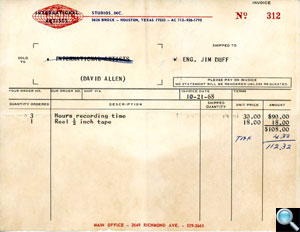 |
International Artists Studio recording invoice for a three-hour Color Blind session with engineer Jim Duff, dated October 21, 1968. |
| Postcard to Dave from an old friend, Billy Gibbons of ZZ Top, postmarked November 19, 1982. |
|
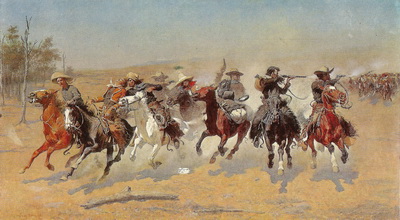 |
Picture side of the above postcard, “A Dash for the Timber,” Frederic Remington’s first great success as a painter in 1889. |

